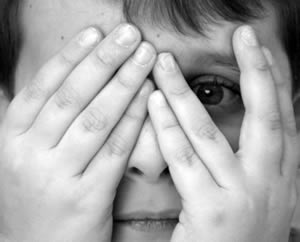Difference between Mania and Phobia
Key Difference: Mania is basically a type of mood which is characterized by abnormally high energy levels. Mania has a variety of intensity levels, which range form mild mania to full mania with extreme energy, racing thoughts, and forced speech. Phobia refers to an abnormal fear of something. Phobias are actually a type of anxiety disorder, which basically means that when a person comes into contact with their phobia, their anxiety levels rise.

Mania and Phobia are two different types of psychological conditions that have different symptoms, conditions, and different effects on people. Mania refers to an abnormally elevated mood, whereas phobia refers to an abnormal fear of something.
The term mania is Greek, which means "madness” or “frenzy”. It is basically a type of mood which is characterized by abnormally high energy levels. It may also include elevated irritability, grandiose thinking, reduced need for sleep, increased sped and volume of speech, disconnected and racing thoughts, increased sexual desire, markedly increased energy and activity level, poor judgment, and inappropriate social behavior.
On the cover, it seems to the opposite of depression, but it is not technically. Mania is actually a symptom that is present is a variety of psychiatric conditions, the most common of which is bipolar disorder. In bipolar disorder, a person suffers from alternate bouts of mania and depression.
In addition to psychiatric conditions, mania may also be experienced through drug intoxication, especially through the use of cocaine and methamphetamine. One may also experience mania as a side effect of certain medications, such as SSRIs, as well as from malignancy, which is the worsening of a condition.
Mania has a variety of intensity levels, which range form mild mania to full mania with extreme energy, racing thoughts, and forced speech. A mild form of mania is officially known as hypomania.
According to BehaveNet, a manic episode is defined as “a kind of mental disorder when an individual experiences a discrete period of persistent and pervasive manic (elated, irritable or euphoric) mood, this term may be applied. The individual may be diagnosed with one of the bipolar disorders.”
A phobia, on the other hand, is a type of overwhelming and debilitating fear of an object, place, situation, feeling or animal. It is a type of unfounded and irrational fear. A person suffering from a phobia has an exaggerated or unrealistic sense of danger regarding something, so much so that they may actually fear for their life.
 Phobias are actually a type of anxiety disorder, which basically means that when a person comes into contact with their phobia, their anxiety levels rise. For some, the phobia may be so pronounced, that just thing about the object of their fear may set off the symptoms, which include unsteadiness, dizziness and lightheadedness, nausea, sweating, increased heart rate or palpitations, shortness of breath, trembling or shaking, as well as an upset stomach. Due to this, people suffering from a phobia go to great lengths to avoid the things they fear, as much so that at times it may impact their social or personal lives.
Phobias are actually a type of anxiety disorder, which basically means that when a person comes into contact with their phobia, their anxiety levels rise. For some, the phobia may be so pronounced, that just thing about the object of their fear may set off the symptoms, which include unsteadiness, dizziness and lightheadedness, nausea, sweating, increased heart rate or palpitations, shortness of breath, trembling or shaking, as well as an upset stomach. Due to this, people suffering from a phobia go to great lengths to avoid the things they fear, as much so that at times it may impact their social or personal lives.
Phobias often developed during childhood or adolescence, and may get less severe as the person gets older. There are two main categories of phobias: specific or simple phobias, and complex phobias.
Specific or simple phobias are phobias that are more commonly occurring. This includes a fear of animals, such as dogs, snakes, spiders, rodents, lizards, etc. It may also include environmental phobias, i.e. fear of heights, deep water and germs; situational phobias, such as visiting the dentist or flying; bodily phobias, which include a fear of blood, vomit, injections, etc.; and sexual phobias, which may include the fear of getting an STD or a fear of failing to perform.
Complex phobias are phobias that tend to be more debilitating and disabling than simple phobias. Complex phobias usually occur as adults and are more incapacitating than the specific or simple types. Complex phobias usually include two common types: agoraphobia and social phobia. Agoraphobia is a phobia of going out of home or a small familiar safe area. Someone with agoraphobia will feel anxious about being in a place or situation where escaping may be difficult if they have a panic attack.
Social phobias are also known social anxiety disorder. This type of phobia centers around feeling anxious in social situations, this may include speaking or performing in front of people.
Comparison between Mania and Phobia:
|
|
Mania |
Phobia |
|
Definition (Merriam-Webster) |
Mental illness in which a person becomes very emotional or excited |
An extremely strong dislike or fear of someone or something |
|
Description |
An abnormally elevated mood state |
A persistent and abnormal fear of something |
|
Type |
Symptom of psychiatric conditions |
Type of Anxiety Disorder |
|
Symptoms |
|
|
|
Causes |
The exact cause is yet unknown. It is believed to have something to do with:
|
Phobias do not have a single cause, but there are a number of associated factors, which may include:
|
|
Treatment |
The treatment of mania would depend on the differential diagnosis of the phychological condition. Depending on the condition, the symptom of mania may be treated with an atypical antipsychotic medication. Prophylactic treatment, usually a combination of pharmacotherapy and psychotherapy may also be used to try to stabilize the patient's mood. |
Simple phobias can be treated by slowly desensitizing the person to the object of their fear. Treating complex phobias often takes longer and involves talking therapies, such as counselling, psychotherapy and cognitive behavioural therapy (CBT). Medications such as antidepressants, tranquillisers, and beta-blockers may be prescribed to treat the effects of anxiety. |
Image Courtesy: frederickkrasey.com, steveseay.com









Add new comment